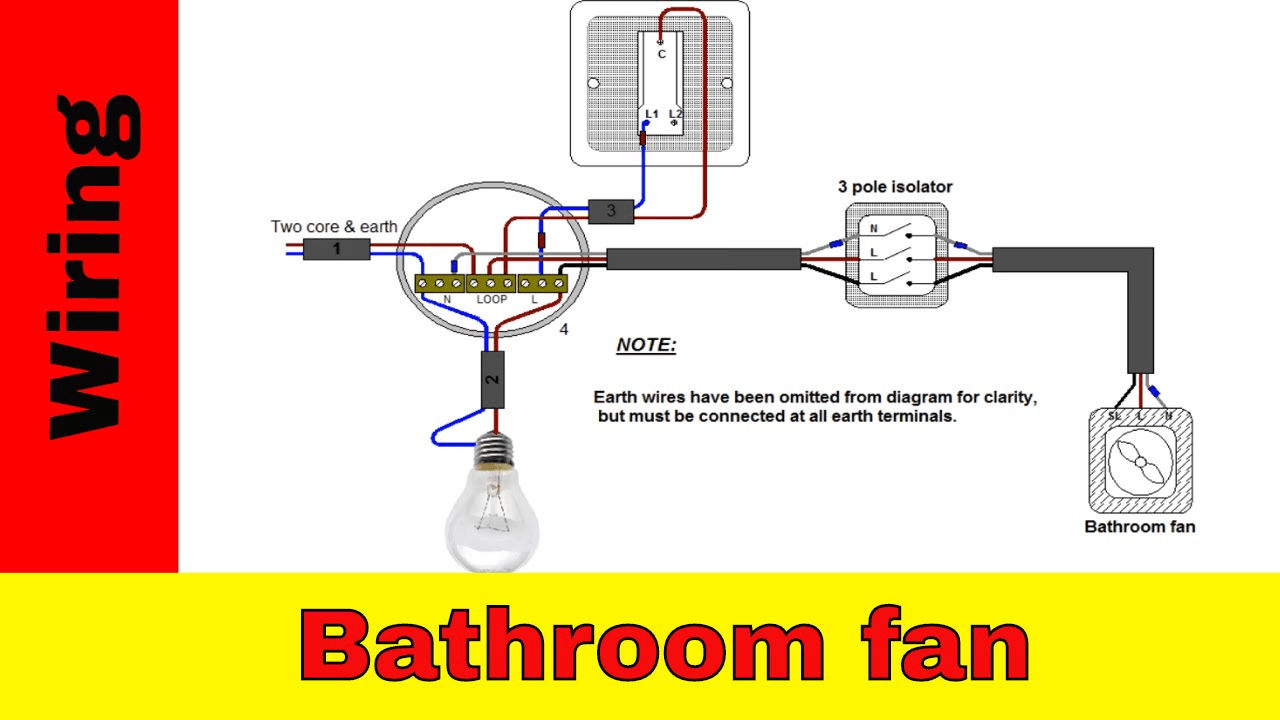Building Code Regulations

Is an exhaust fan required in a bathroom –
The International Residential Code (IRC) sets minimum standards for the design and construction of residential buildings, including requirements for bathroom exhaust fans. Local building codes may adopt the IRC or have their own specific requirements.
So, do you really need an exhaust fan in your bathroom? Well, it depends. If you’re like me, who spends hours in the bathroom scrolling through iphone 12 pro max wallpaper , then an exhaust fan is a must. Not only will it keep the air fresh, but it’ll also help prevent mold and mildew from building up.
In general, the IRC requires that bathrooms have an exhaust fan that is vented to the outdoors. The fan must be capable of exhausting at least 50 cubic feet per minute (CFM) of air.
Jadi, exhaust fan itu penting nggak sih di kamar mandi? Penting banget! Soalnya, kamar mandi kan lembab, jadi butuh udara yang bersirkulasi biar nggak pengap. Nah, kalau kalian lagi cari inspirasi buat dekorasi kamar mandi, coba deh cek korean wallpaper.
Motifnya kece-kece, kamar mandi jadi makin kece juga. Balik lagi ke exhaust fan, pastikan kalian pasang exhaust fan yang bagus ya, biar kamar mandi nggak bau apek.
CFM Ratings
The CFM rating of an exhaust fan indicates the volume of air that the fan can move in one minute. A higher CFM rating indicates a more powerful fan.
The IRC requires that bathroom exhaust fans have a CFM rating of at least 50 CFM. However, a higher CFM rating may be required in larger bathrooms or bathrooms with multiple fixtures.
Benefits of Bathroom Exhaust Fans: Is An Exhaust Fan Required In A Bathroom

Installing an exhaust fan in your bathroom is like giving your bathroom a breath of fresh air, literally! These nifty devices offer a range of benefits that will make your bathroom a more comfortable, healthier, and altogether more pleasant place to be.
Moisture and Humidity Control
Bathrooms are notorious for being moisture magnets. From steamy showers to overflowing bathtubs, there’s no shortage of water vapor floating around. An exhaust fan helps to remove this excess moisture, reducing the humidity levels in your bathroom. This is important because high humidity can lead to a number of problems, including mold and mildew growth, which can cause respiratory issues and other health problems.
Mold and Mildew Prevention
Mold and mildew thrive in moist environments, so reducing the humidity in your bathroom is essential for preventing these nasty fungi from taking hold. An exhaust fan helps to keep the air circulating and the humidity levels down, making it much less hospitable for mold and mildew to grow.
Improved Air Quality
In addition to removing moisture, exhaust fans also help to improve the air quality in your bathroom by removing odors and pollutants. This is especially important if your bathroom is small or poorly ventilated. An exhaust fan can help to clear the air of unpleasant smells, such as those from cleaning products or body odor, and it can also remove harmful pollutants, such as VOCs (volatile organic compounds), which can be released from building materials and cleaning products.
Types of Bathroom Exhaust Fans

Exhaust fans are an essential part of any bathroom, helping to remove moisture, odors, and pollutants from the air. There are three main types of bathroom exhaust fans: ceiling-mounted, wall-mounted, and inline fans.
Ceiling-Mounted Exhaust Fans
Ceiling-mounted exhaust fans are the most common type of bathroom exhaust fan. They are installed in the ceiling and typically have a round or square grille. Ceiling-mounted exhaust fans are relatively easy to install and are available in a variety of sizes and styles.
Wall-Mounted Exhaust Fans, Is an exhaust fan required in a bathroom
Wall-mounted exhaust fans are installed on the wall, typically above the shower or bathtub. They are less common than ceiling-mounted exhaust fans, but they can be a good option for bathrooms with limited ceiling space. Wall-mounted exhaust fans are available in a variety of sizes and styles, and they can be matched to the décor of the bathroom.
Inline Exhaust Fans
Inline exhaust fans are installed in the ductwork of the bathroom exhaust system. They are not visible from the bathroom, but they can be more expensive to install than ceiling-mounted or wall-mounted exhaust fans. Inline exhaust fans are often used in large bathrooms or bathrooms with multiple fixtures.
| Type | Advantages | Disadvantages |
|---|---|---|
| Ceiling-Mounted | Easy to install Available in a variety of sizes and styles |
Can be noisy May not be suitable for bathrooms with limited ceiling space |
| Wall-Mounted | Less common Can be a good option for bathrooms with limited ceiling space |
More expensive to install than ceiling-mounted exhaust fans |
| Inline | Not visible from the bathroom Can be more expensive to install |
Often used in large bathrooms or bathrooms with multiple fixtures |
| Model | Noise Level (sones) | Energy Efficiency (CFM/watt) | Cost ($) |
|---|---|---|---|
| Broan-NuTone 671 | 1.5 | 100 | $100 |
| Panasonic FV-08VQ3 | 0.3 | 120 | $150 |
| NuTone 9975001 | 2.0 | 90 | $75 |